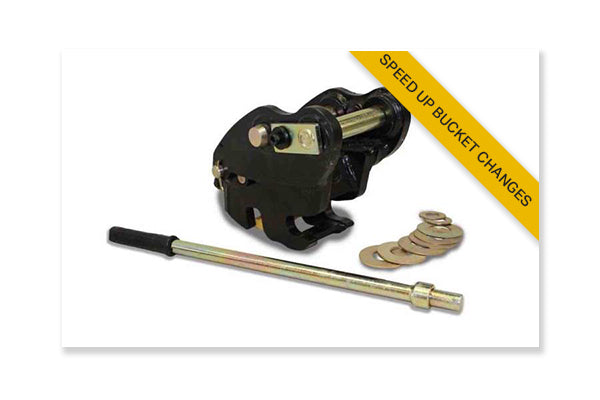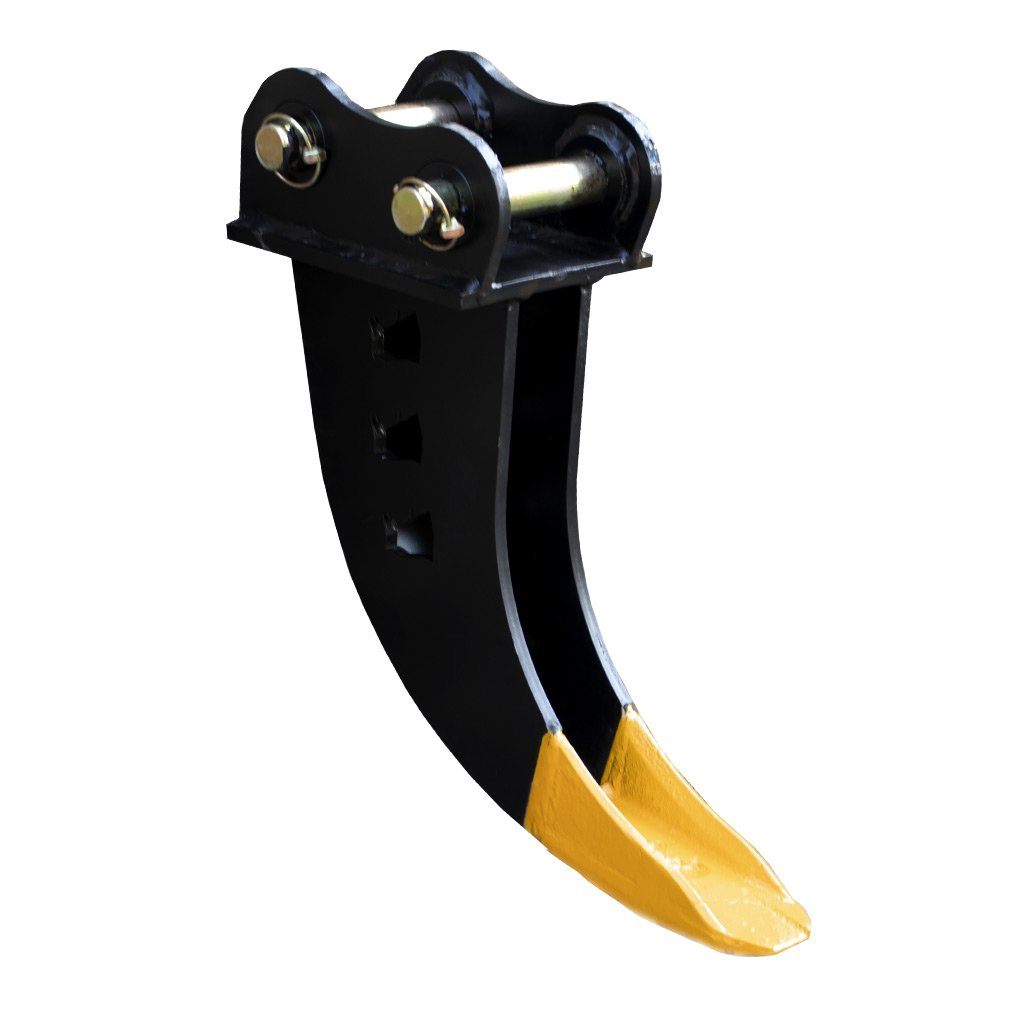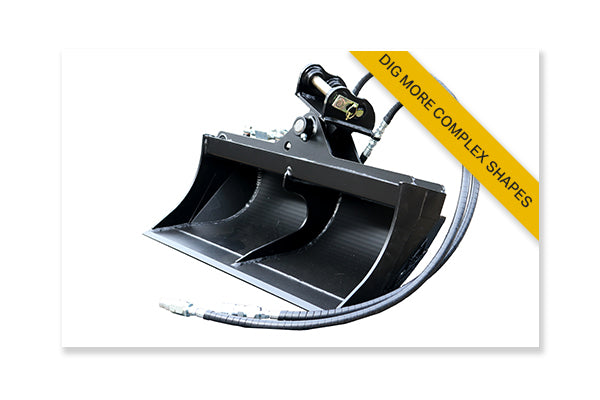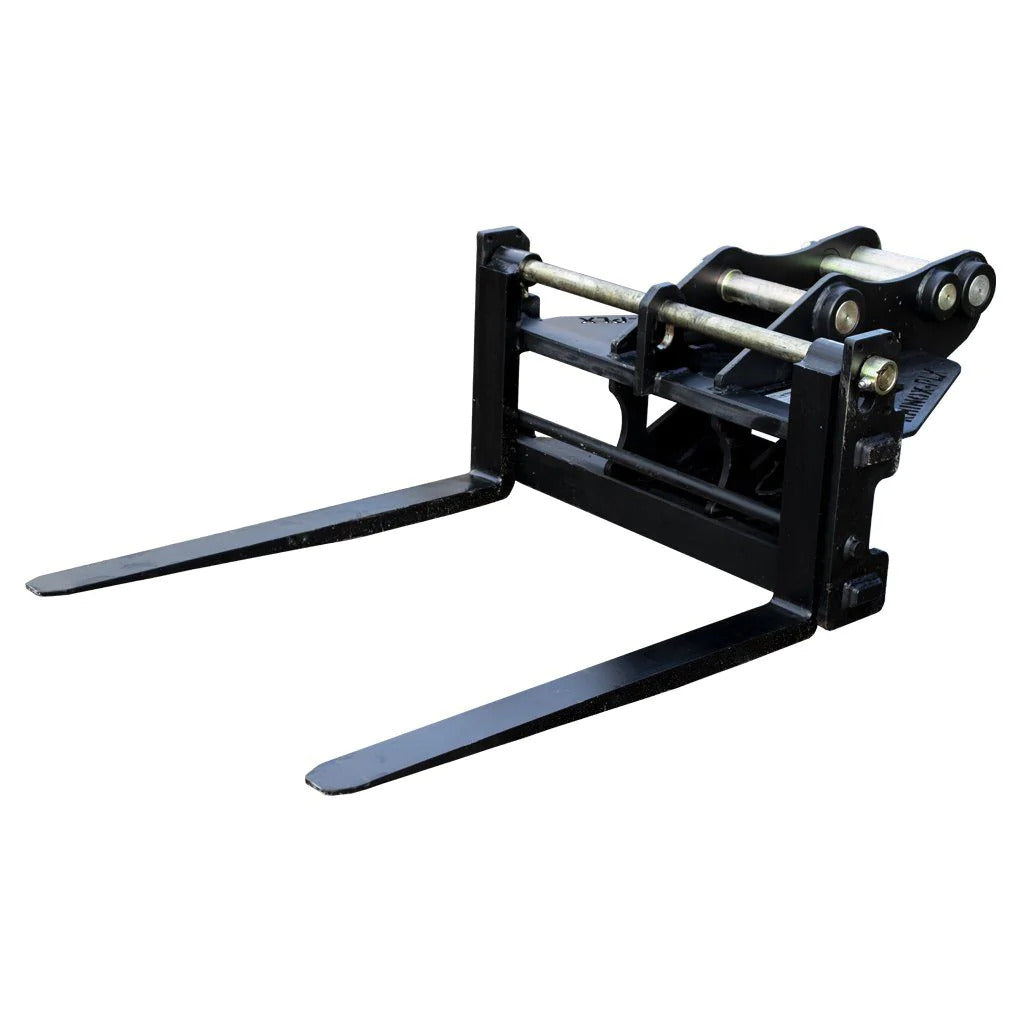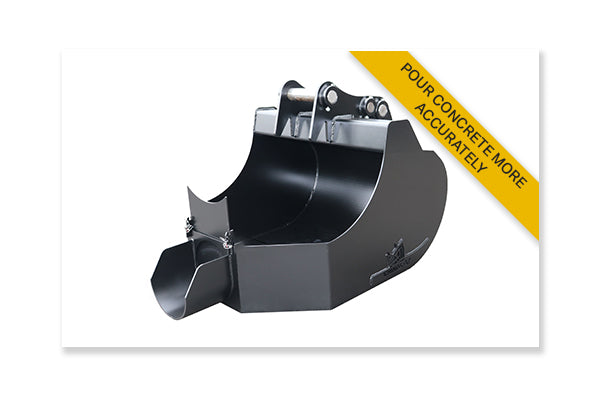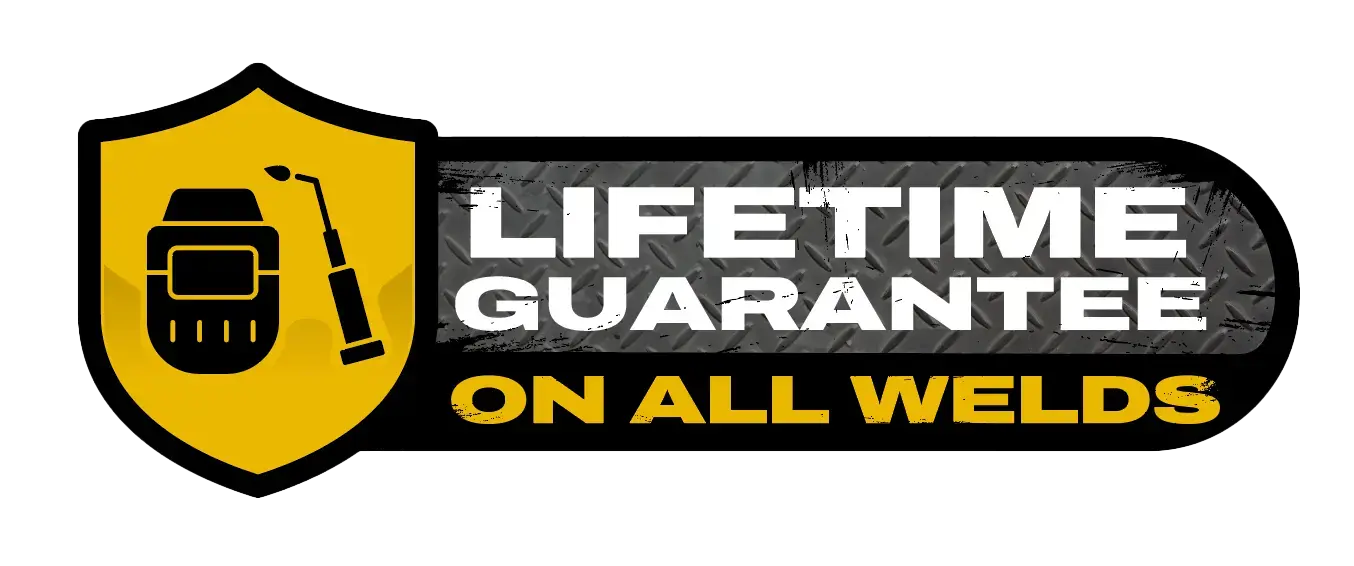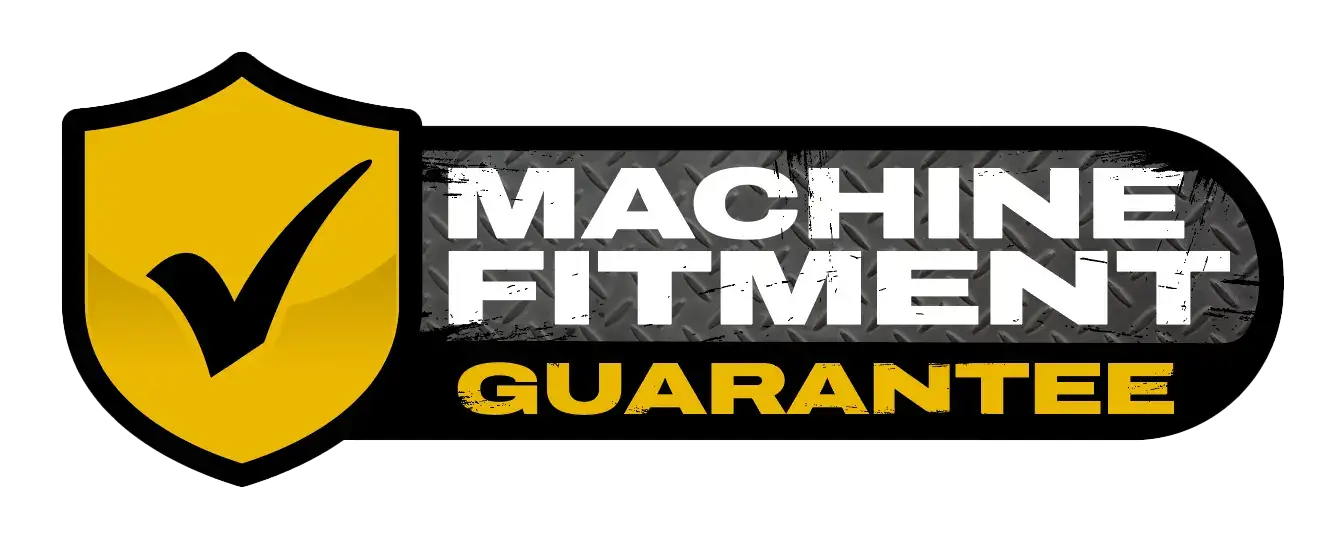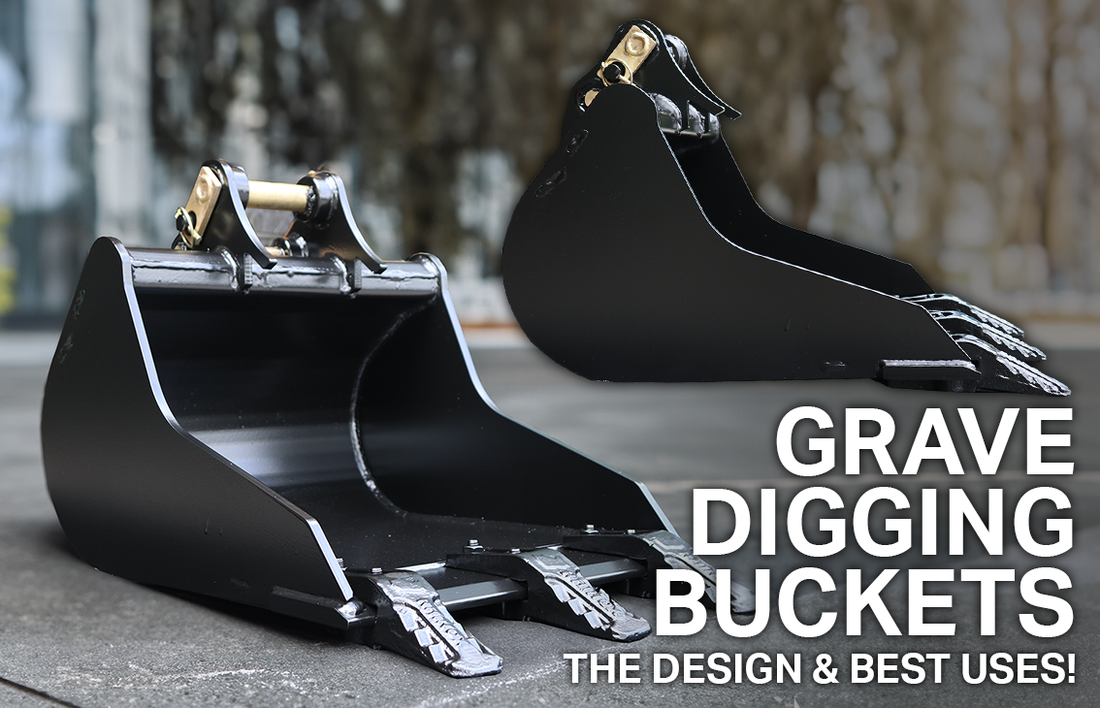
Grave Digging Buckets - Design & Best Uses
When contemplating the tools associated with burial preparations, grave digging buckets stand out as essential mini digger and backhoe attachments, designed to improve the efficiency and precision of your task at hand. While the name suggests a singular purpose, these specialised buckets are not limited to grave digging alone. Continue reading as we explore the diverse nature of grave buckets, delving into the design, numerous applications beyond burials and providing insights on how to use them effectively.
What is a Grave Digging Bucket?
As the name suggests, the grave digging bucket is a specialised excavator and backhoe bucket that's most commonly used for digging graves. The unique geometry of this digger bucket makes it easier for digging straight-sided holes, with the long base creating a flat bottom to the hole and makes it easier for smaller machines to dig deeper than usual.
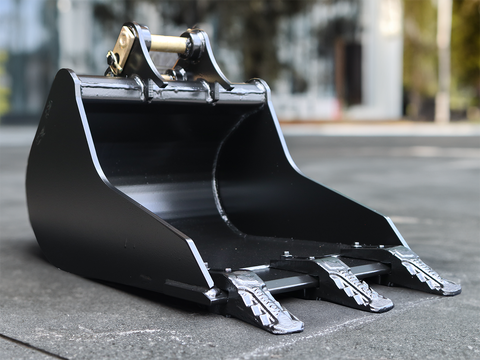
Also known as the bellhole bucket or cemetery bucket, the grave bucket is required to withstand the challenges of digging through compacted soil, roots and rocky terrain. This is why the Rhinox grave digging bucket is made from wear resistant steel and comes with a lifetime guarantee on the welds so you're confident that your bucket with stand the test of time. Our mini digger grave buckets are also fitted with serrated, bolt-on bucket teeth to make penetrating tough grass and solid material much easier with less strain on the excavator. The 'bolt-on' ability allows you to quickly and easily remove and replace the teeth as they wear.
Like all Rhinox digging buckets do, Rhinox grave digging buckets also feature bucket hooks for quick and easy transportation of multiple buckets around site. Not only do they make you more efficient, they also improve your safety as you eliminate the need to unevenly stack buckets inside of each other.
Applications Beyond Grave Digging:

1. Construction and Excavation
Grave digging buckets can also be used in the broader construction and excavation industry, for digging holes to test foundations or any project that requires precise and controlled soil removal, with minimal distribution to surrounding areas.
2. Landscaping
The grave bucket is utilised in landscaping projects for creating flower beds or reshaping the terrain. The precision of these buckets makes them ideal for achieving clean and well-defined edges, which can be essential for landscapers when renovating a garden or similar.
3. Utilities Installation
When installing utility lines or pipes underground, grave digging buckets can be used to excavate the necessary trenches. Although not as common as a standard utility bucket or micro trenching bucket, the grave digging bucket is a great way to get a clean sided and flat bottomed trench for laying ducting and utilities.
4 Tips for Using a Grave Digging Bucket

1. Safety First -
Always wear appropriate personal protective equipment (PPE), be aware of your surroundings and ensure that there are no underground utilities or obstacles in the digging area.
2. Equipment Inspection -
Before starting work, inspect the excavator and the grave digging bucket for any signs of damage or wear. Ensure that all connections are secure and that hydraulic hoses are in good condition to ensure safe operating.

3. Proper Bucket Size -
Choose the appropriate size grave digging bucket for the job. The size will depend on the dimensions of the grave or excavation site and the type of soil you are working with.
4. Dig in Layers & Avoid Overloading -
Dig gradually, rather than trying to excavate the entire depth in one pass. This helps maintain stability and avoid overloading the digger's load capacity and control during the digging process and ensures you don't remove to much material or miss any hidden utilities or objects in the soil.
While grave digging buckets may have earned their name from their association with burial preparations, their uses extend far beyond the confines of cemeteries. By acknowledging their versatility and appreciating the careful design that makes them suitable for various applications, we recognise the broader impact of these specialised tools. Whether used in construction, landscaping or traditional burials, grave digging buckets play a crucial role in efficiency and precision.
If you're looking to purchase a grave digging bucket for your 1.5 ton mini digger, Rhinox can manufacture you one on a short lead time of 5-10 working days. The Rhinox grave bucket is available for all the most common machine makes and model of digger, including Bobcat, Takeuchi, Kubota and JCB. Shop our full range.
Learn more with Rhinox:
 |
 |
 |

